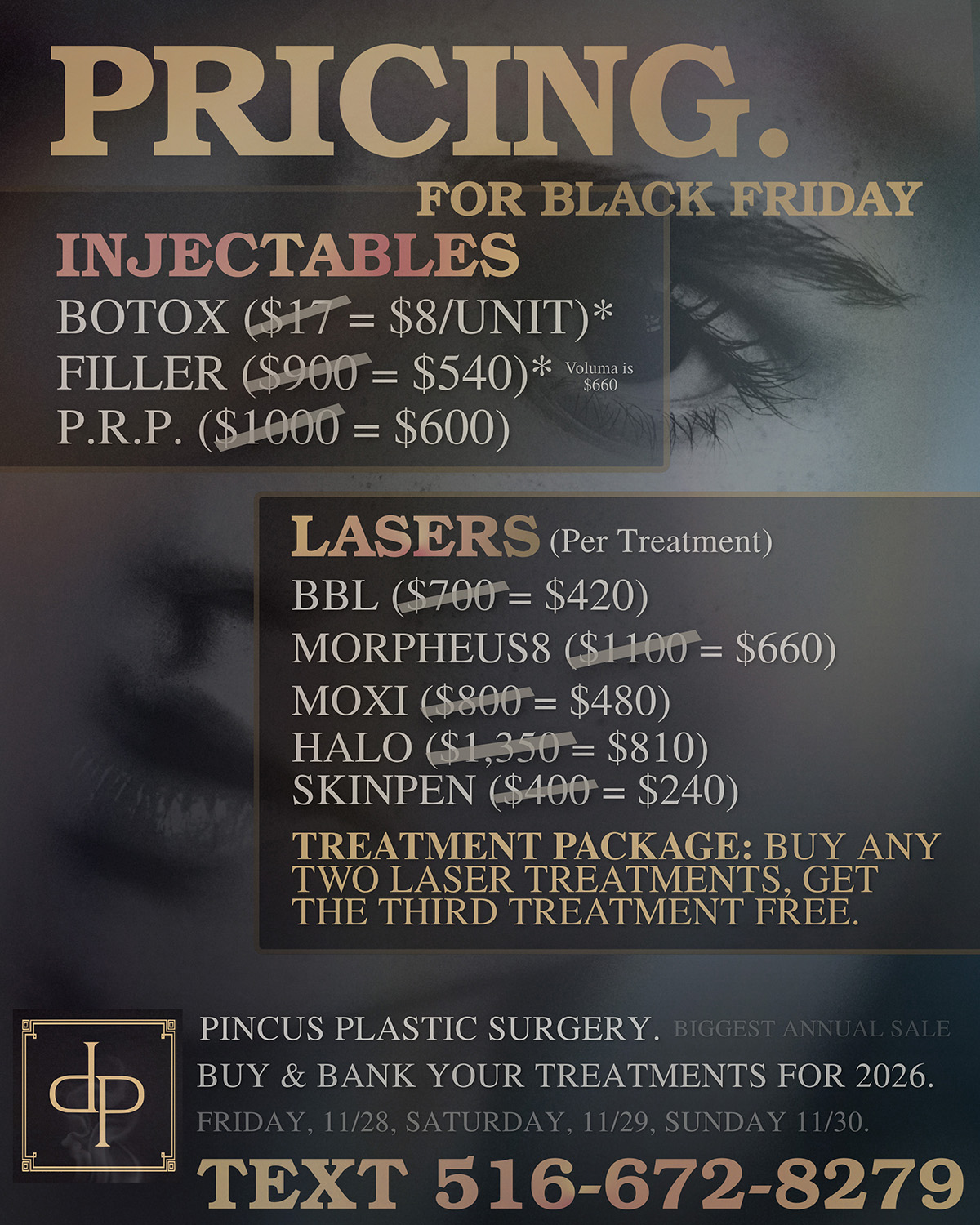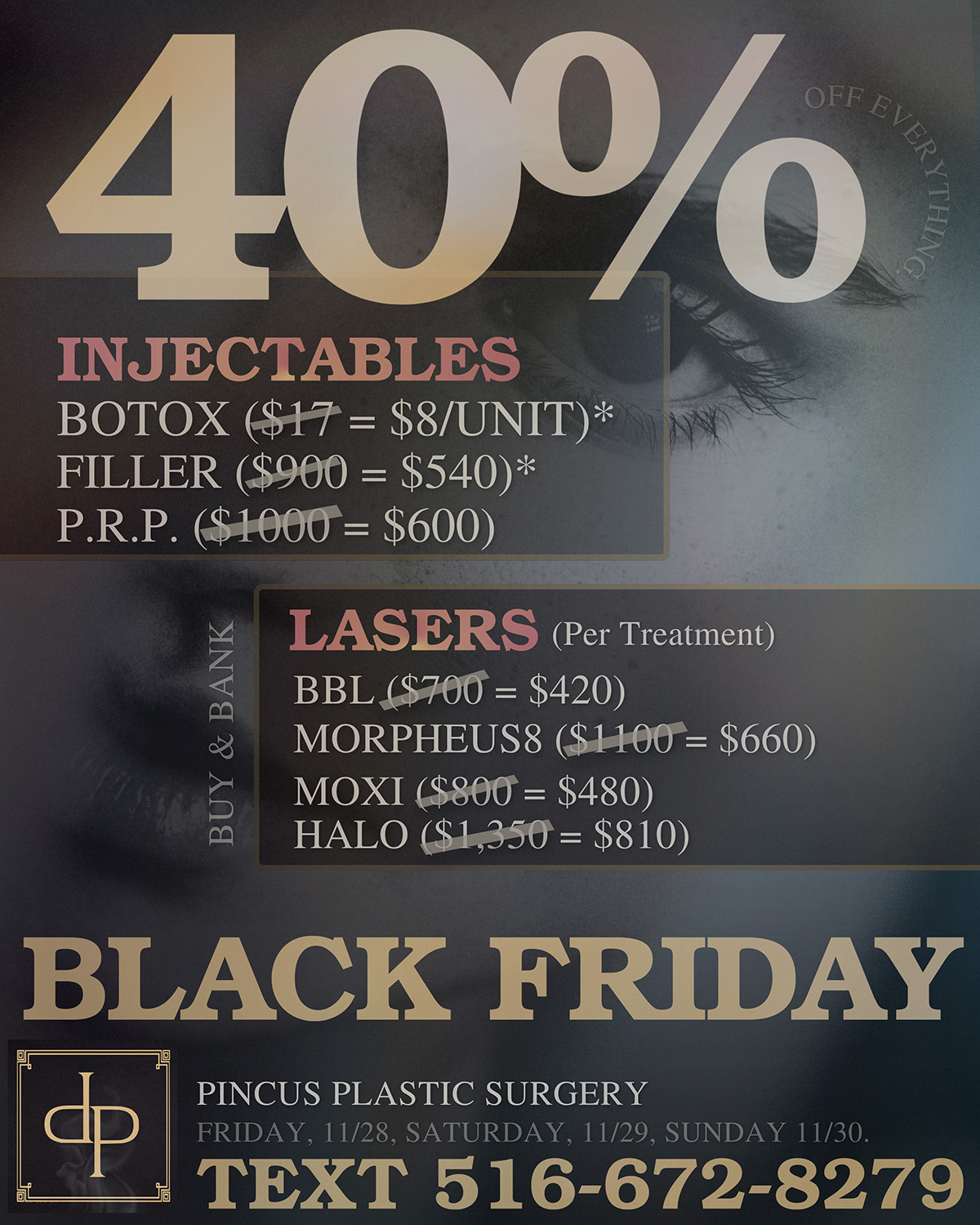Breast Cancer Awareness

Every October, Breast Cancer Awareness Month is an annual campaign designed to highlight the importance of early detection, education, and support for women and their loved ones who are affected by breast cancer. According to the American Cancer Society, about 1 in 8 women in the United States will develop invasive breast cancer during her lifetime, and more than 300,000 new cases are expected to be diagnosed in 2025.
While breast cancer survival rates have improved thanks to earlier detection and advances in treatment, it’s still essential to be aware of changes to your breasts. In this blog, we’ll go over the types of breast cancer and contributing factors, as well as options for treatment and reconstruction.
Table of Contents
- Types of Breast Cancer
- Factors That Contribute to Breast Cancer
- Breast Cancer Treatment Options
- Types of Breast Reconstruction at Pincus Plastic Surgery
- Breast Reconstruction Options in Smithtown, NY
Types of Breast Cancer
Breast cancer isn’t a single disease—the term encompasses several types, each affecting different parts of your breast and requiring specific treatment approaches. The type of breast cancer you have and the best options for treatment depend on where it begins and whether it has spread.
Ductal Carcinoma In Situ (DCIS)
DCIS is a non-invasive cancer confined to the milk ducts. Although it’s not life-threatening, it requires prompt treatment to prevent it from progressing.
Invasive Ductal Carcinoma (IDC)
The most common form of breast cancer (accounting for roughly 80% of all breast cancers), IDC begins in the ducts and invades surrounding tissue. It can potentially spread to other areas of your body if not detected and treated early.
Invasive Lobular Carcinoma (ILC)
Invasive lobular carcinoma originates in the milk-producing glands (called lobules) and may spread to nearby tissues.
Triple-Negative Breast Cancer
Triple-negative breast cancer is an especially aggressive type of breast cancer that is missing the three primary receptors typically found in other breast cancers: estrogen, progesterone, and HER2. These receptors act like “switches” on cancer cells, responding to specific hormones and helping determine treatment decisions and predict how the disease might progress. Because it lacks these receptors, triple-negative breast cancer does not respond to many standard hormone-based or targeted therapies, making it more challenging to treat effectively.
Inflammatory Breast Cancer
A rare but fast-growing form of breast cancer, inflammatory breast cancer causes redness, swelling, and warmth in your breast, often without the presence of a lump that typically characterizes some breast cancers.
Factors That Contribute to Breast Cancer
While anyone (even men) can develop breast cancer, certain factors can increase your risk, including:
- Genetic Factors: Mutations in the BRCA1 and BRCA2 genes significantly increase your breast cancer risk.
- Age: The likelihood that you will develop breast cancer increases as you get older, especially after age 50.
- Hormones: Long-term exposure to estrogen, such as through early menstruation or late menopause, may increase your risk of developing breast cancer.
- Lifestyle: Alcohol consumption, obesity, lack of exercise, and a poor diet can all play a role in breast cancer development.
- Family History: Having a close relative with breast cancer increases your risk, though most cases occur in women without a family history.
Although some risk factors are out of your control, performing regular breast self-exams, annual screenings, and genetic counseling (if applicable) can help with early detection and prevention.
Breast Cancer Treatment Options
Breast cancer treatment depends on the type, stage, and hormone receptor status, as well as your overall health and individual needs. Options may include:
Breast Surgery
Lumpectomy (removal of the malignant tumor and surrounding tissue) or mastectomy (removal of one or both breasts)
Radiation Therapy
A targeted treatment used to destroy remaining cancer cells after surgery.
Chemotherapy
Systemic treatment is given to shrink tumors or eliminate cancer cells throughout your body.
Hormonal Therapy
Used to block cancer cell growth in hormone receptor-positive or HER2-positive types of breast cancer.
Immunotherapy
Focused treatments designed to attack specific cancer cell mechanisms or help your immune system recognize and fight cancer cells more effectively.
After completing lumpectomy or mastectomy treatment, many women undergo breast reconstruction to restore their natural breast shape and regain a sense of normalcy and confidence.
Types of Breast Reconstruction at Pincus Plastic Surgery
At Pincus Plastic Surgery, we offer advanced breast reconstruction options designed to create results that are long-lasting and, most importantly, look and feel natural. Dr. Pincus’ compassionate approach to breast reconstruction focuses on restoring both the physical balance of your body and your emotional confidence following a mastectomy or lumpectomy.
Expander and Implant Reconstruction
This approach involves placing a temporary tissue expander beneath your chest muscle or remaining skin after a mastectomy. Over the course of several weeks, the expander is gradually filled with saline to stretch the tissue, allowing the implant to be placed comfortably. Once the area has reached the desired size, the expander is replaced with a permanent silicone or saline implant. This option provides beautiful, predictable results and typically involves a shorter recovery compared to a flap procedure.
Tissue Flap Reconstruction
If you’re seeking a more natural result, autologous (flap) breast reconstruction utilizes your own tissue, typically harvested from the abdomen, thigh, or back. Standard techniques include DIEP, TRAM, or latissimus dorsi flaps. Because the new breast mound is made of natural tissue, the result is soft, natural breasts that change with your body over time.
Combination of Implant and Flap Reconstruction
If you want or need more volume or shape refinement, a hybrid approach to breast reconstruction combines the stability of an implant with the softness of tissue from a flap. This technique offers the best of both worlds: the softness and contour of natural tissue, with the fullness and symmetry of an implant.
In some cases, you may require breast revision after breast reconstruction. Depending on what technique was used for reconstruction and what stage of breast cancer recovery you were in at the time of reconstruction, some aesthetic refinements may need to be made after your initial surgery. If you need some fine-tuning to the results of your breast reconstruction, breast revision after reconstruction may be the solution.
Breast Reconstruction Options in Smithtown, NY
Breast cancer can be a challenging journey, from diagnosis to treatment options to reconstruction. However, support from family, friends, and compassionate, experienced surgeons can make the process one that focuses on health and empowerment. At Pincus Plastic Surgery, breast reconstruction is not just about rebuilding tissue; it’s about restoring your confidence and sense of wholeness after breast cancer.
Whether you’re considering immediate reconstruction during mastectomy or a delayed approach after recovery, board-certified plastic surgeon Dr. David J. Pincus and his team provide expert care and guidance every step of the way. To learn more about breast reconstruction and schedule a consultation with Dr. Pincus, contact our office today by calling (631) 352-3556 or completing the online contact form.



